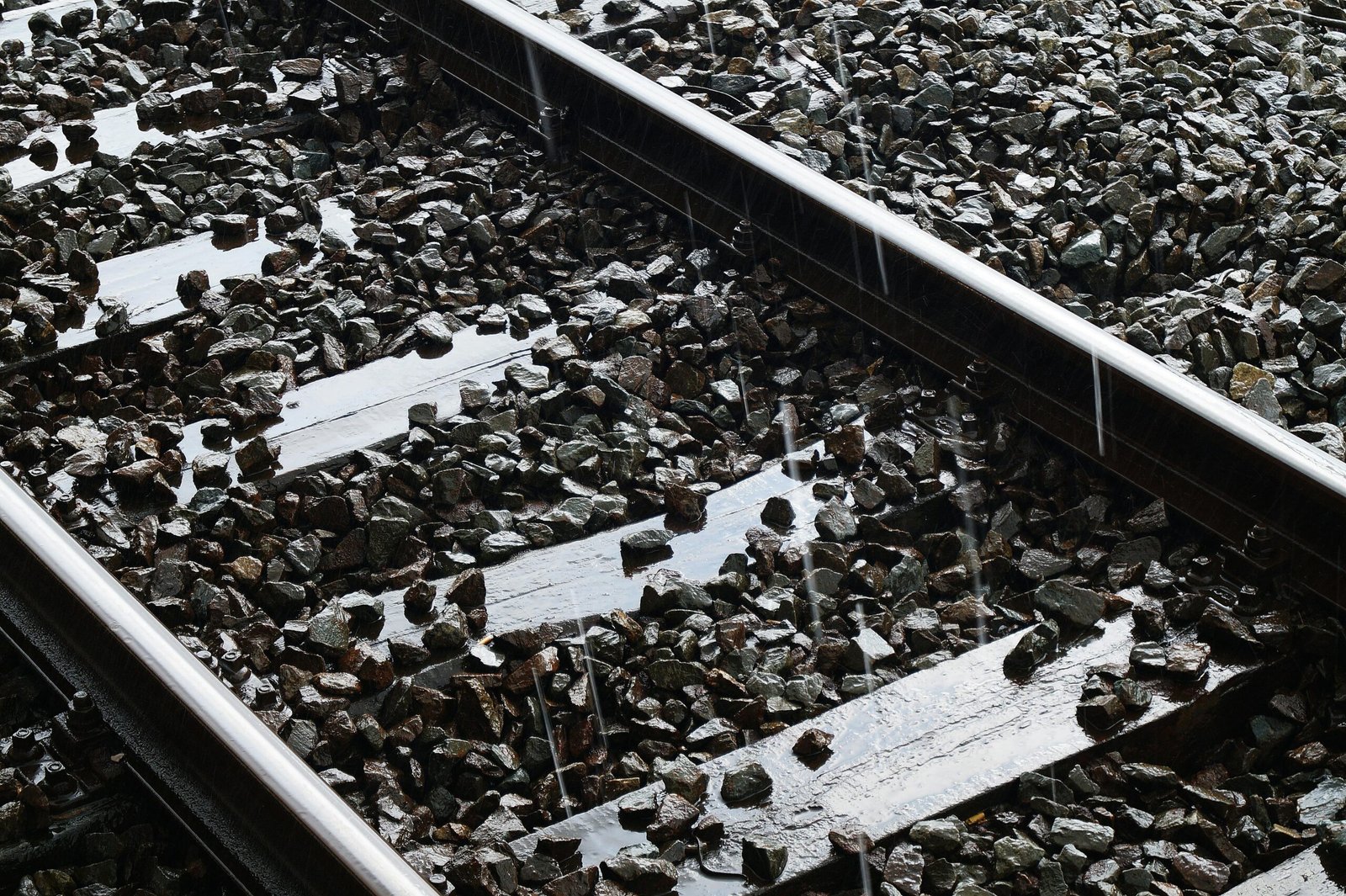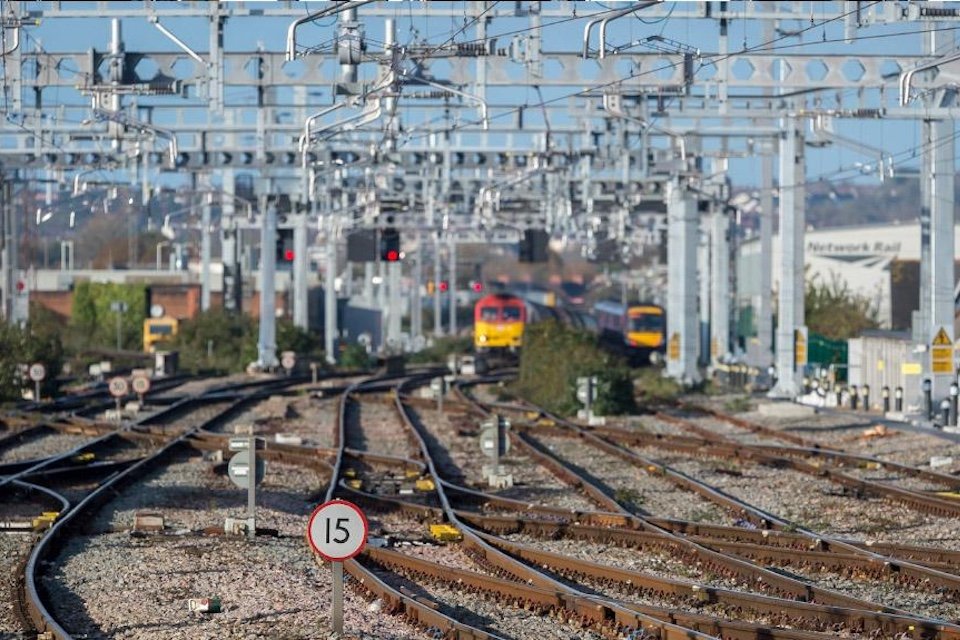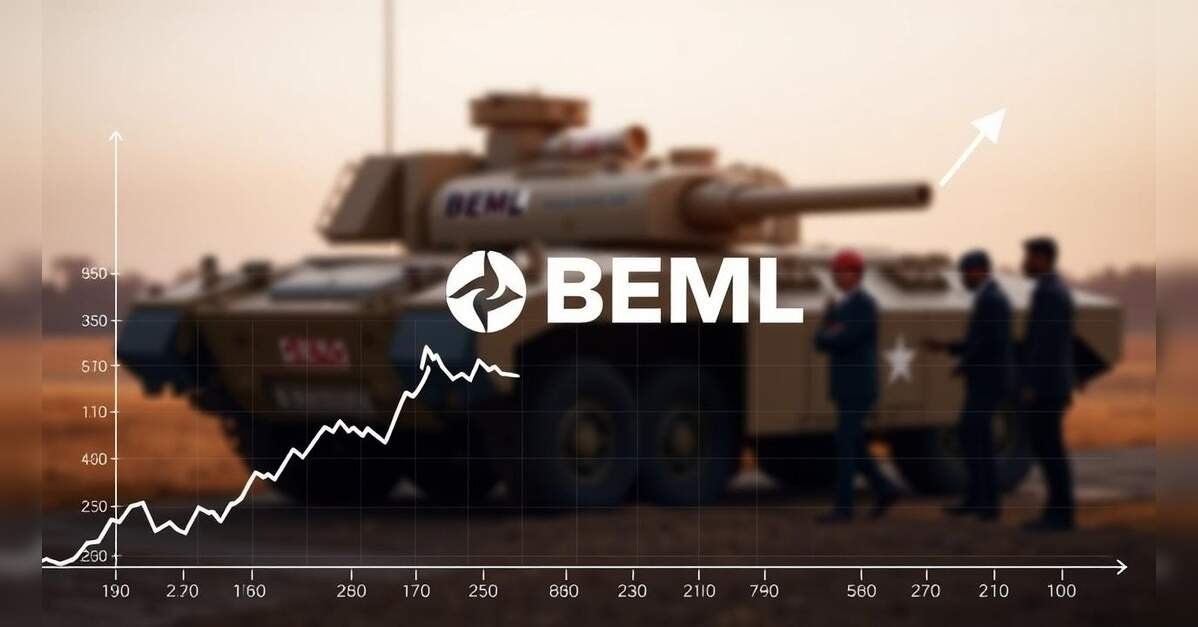Rail & Road
Drainage, CP7 & the Implications for Rail Safety

As investment in rail infrastructure begins to accelerate via Network Rail’s £45-billion of CP7 funding, 75% of which will be spent on maintenance and renewal projects, (name and job title) explains why drainage is now a core focus for the rail industry and why it’s finally being recognised for the vital role it plays in ensuring the safety of the rail network.
Drainage has been an age old problem for network operators causing soft spots in track stability and effecting the maximum safe speed at which trains can operate but the full impact of poor drainage was not fully understood and in fact, for many years, drainage was seen as a relatively low-priority, commodity product by the rail industry. That all changed in 2020.
On 12 August that year, after a period of extreme and torrential rainfall, the Aberdeen to Glasgow train derailed at Carmont near Stonehaven, Aberdeenshire resulting in the deaths of three men and injury to its six passengers.
Having left the track, the train collided with a bridge parapet which caused the train to veer off the bridge and down the steep embankment below the bridge. The subsequent investigation found that the derailment of the train, which had already been prevented from completing its journey south because of a landslip south of Carmount, was caused by gravel and other stony debris being washed out of a drain and onto the track. In effect, a drainage failure.
A joint investigation by Police Scotland, British Transport Police and the Office of Rail and Road (ORR) under the direction of Crown Office and the Procurator Fiscal Servicei and the related 2022 report highlighted three key issues: Network Rail failed to ensure that its contractor had built the drain in accordance with the approved design; it had not inspected the whole drain since its construction, and its staff had not been comprehensively trained to effectively analyse weather forecasts or in how to use all available weather data resources – an important factor as high intensity rainfall events, which make mitigating flood risks a priority, are becoming increasingly common.
With the ongoing impact of climate change and more recently recorded incidents on the rail network, a much more robust approach to water management is now been adopted and drainage has become a significant area of focus for Britain’s rail industry.
Balfour Beatty said:
Drainage is now the biggest issue for the rail network to resolve.
Falling under Network Rail’s ‘Core Assets Renewals’ segment of CP7 expenditure which totals more than £19bn, drainage is now valued for the impact it has on network efficiency, costs and importantly, passenger safety – a core area of focus for CP7. Addressing the issues around drainage is seen as a particularly pressing concern because of the effects of climate changeii.
Network Rail for its part is taking drainage very seriously. It has set up a ‘specialist drainage group’, has published a challenge statement with regard to drainage which summarises the need for better drainage and the issues facediii, and now routinely conducts drainage assessments across its network. As an industry, the construction products sector and its merchant partners also have a role to play.
Following changes to the product approval processes used within the rail industry, the need for PADS approval on drainage products has now been removed and as a result, the engineering community is now responsible for drainage design. This means engineers are now able to focus on product performance rather than having to use what some rail engineers considered to be a restricted list of approved products.
As a result, drainage, culverts and other assets are now being designed to assume that major storms or rainfall events will occur on an annual basis and not once in every 50 years, the previous design requirement.
The move away from PADS approval will also give the understandably risk-adverse rail industry the opportunity to access drainage and water management systems which have been tried and tested in similar applications such as highways, an area where Naylor has a strong track record with products including Naylor’s popular ‘MetroDrain’ system which is ranked number one by National Highways and its ‘AquaVoid’ water attenuation system which is designed specifically to deal with stormwater at or near to its source.
It also means that drainage manufacturers and their merchant partners are now in a position to give the rail sector informed specification guidance based on the full range of drainage and flood management systems which are available for them to use, and importantly their in-situ performance in rail and related applications.
Our hope at Naylor is that this, coupled with the strong focus on drainage within CP7, will help drive the specification of future-proofed, high performance drainage solutions in the rail industry which will enhance the safety and operating efficiency of our rail network, and ultimately benefit us all.
This article was originally published by Naylor.
Tags
Products & Services
Rail & Road
ORR serving up rail development on a plate

There is a strong appetite to invest in rail. However, barriers hold back the market, says the official regulator in the UK. The Office of Rail and Road (ORR) has conducted a review that reveals latent opportunities for rail infrastructure investment. Work is now underway at the regulator to remove barriers and streamline the investment process to support economic growth.
Subscribe to gain access to all news
Already have a subscription? Log in.
Choose your subscription
Or
Want to read this article for free?
You can read one free article per month. Enter your email and we’ll send you a free link to access the full article. No payment required.
Rail & Road
BEML Secures First International Rail-Metro Contract in Malaysia for ₹1 Million, ETInfra

State-owned firm BEML Limited has received its maiden overseas contract in the rail and metro segment from Malaysia valued at ₹1 million.
The work is for the retrofit and reconditioning of the Mass Rapid Transport System, according to a company stock exchange filing.
“…we hereby inform that BEML Limited received its maiden overseas contract in the Rail and Metro segment from Malaysia for the Retrofit and Reconditioning of the Mass Rapid Transport System on 09.08.2025, valued at ₹1 million,” the company informed stock exchanges.
BEML Limited, a leading multi-technology ‘Schedule A’ company under the Ministry of Defence, plays a pivotal role in serving India’s core sectors, including defence, rail, power, mining, and construction, by offering world-class products.
BEML operates in three verticals: Defence and aerospace, mining and construction, and rail and metro. It has state-of-the-art manufacturing facilities located in Bengaluru, Kolar Gold Fields (KGF), Mysore, and Palakkad, with a strong R&D infrastructure and a nationwide sales and service network.
Separately, in early July, BEML Limited inaugurated its newly built state-of-the-art warehousing facility, spread over 0.12 acres, at the Karnataka Industrial Areas Development Board (KIADB) Aerospace Special Economic Zone (SEZ), Bengaluru.
This marked a significant milestone in BEML’s long-term vision of supporting India’s aerospace growth and creating a robust supply chain ecosystem for global and domestic Original Equipment Manufacturers (OEMs).
The facility is designed not only to support BEML’s internal logistics, but also to offer warehousing and allied services to other OEMs, Tier-1, and Tier-2 players.
BEML envisions to create a Centre of Excellence for Aerospace Technologies within this SEZ, empowering India’s self-reliance journey in defence and aerospace while creating a vibrant ecosystem for innovation, collaboration, and growth.
Rail & Road
A Strategic Bet on America’s Infrastructure Renaissance

FTAI Infrastructure Inc. (NASDAQ: FIP) has made a bold move to position itself at the forefront of the U.S. infrastructure renaissance with its $1.05 billion acquisition of the Wheeling & Lake Erie Railway (W&LE). This transaction, secured through a $2.25 billion capital raise—including $1.25 billion in new debt and $1 billion in preferred stock from Ares Management—marks a pivotal step in the company’s evolution from a niche infrastructure player to a diversified rail powerhouse. For investors, the deal represents a rare opportunity to capitalize on a strategic acquisition that aligns with the Biden administration’s $1.2 trillion infrastructure bill, which is turbocharging demand for freight rail services.
Strategic Synergies and Geographic Expansion
The W&LE’s 1,000-mile network spans four industrial heartland states, connecting key manufacturing hubs, energy corridors, and ports. Its integration with Transtar’s Union Railroad in Pittsburgh creates a seamless, cross-regional rail network capable of handling surging demand for bulk commodities, automotive logistics, and intermodal freight. This acquisition not only expands FTAI’s operational scale but also diversifies its revenue streams, reducing reliance on any single sector.
The Biden-era infrastructure stimulus has already spurred a 15% year-over-year increase in rail freight volumes, according to the Association of American Railroads. FTAI’s expanded network is uniquely positioned to capture this growth, particularly in the energy transition—W&LE’s routes serve coal-fired power plants and emerging renewable energy projects, offering a dual-use asset in a shifting market.
Financial Engineering and Risk Mitigation
The acquisition’s financing structure is as innovative as it is ambitious. By issuing preferred stock to Ares Management and refinancing high-cost debt, FTAI has reduced its debt-to-EBITDA ratio from 76% to a more manageable 3–3.5x by 2025. This maneuver not only lowers interest expenses but also signals confidence in the company’s ability to generate $200 million in annual Adjusted EBITDA by 2026—a 60% increase from current levels.
Critics may point to the company’s heavy leverage, but the projected EBITDA growth and the inelastic demand for rail services in the U.S. suggest a strong margin of safety. The W&LE’s existing 250+ customers, including Fortune 500 companies, provide a stable revenue base, while the Biden administration’s focus on reshoring manufacturing could unlock new business opportunities.
A Hidden Winner in a Stimulus-Driven Market
FTAI’s acquisition is a masterclass in value creation. While the market has largely focused on high-profile infrastructure projects like EV charging networks or broadband expansion, FTAI is quietly building a cash-generative asset base with long-term durability. The W&LE’s routes are embedded in regions where rail infrastructure is aging and in need of modernization—a gap the Biden bill is designed to address.
Moreover, the transaction’s regulatory approval by the U.S. Surface Transportation Board (expected in Q3 2025) will cement FTAI’s status as a consolidator in the fragmented Class II rail sector. With only 12 Class II railroads in the U.S., FTAI’s scale and strategic positioning could deter competition and drive pricing power.
Why Act Now?
The key for investors is timing. FTAI’s stock currently trades at a discount to its projected intrinsic value, reflecting skepticism about its debt load and integration risks. However, the company’s refinancing strategy and the earnings call on August 8—where management will detail the path to EBITDA growth—could catalyze a re-rating.
For those willing to look beyond short-term volatility, FTAI offers a compelling case: a high-conviction bet on the infrastructure renaissance with a clear line of sight to earnings growth. As the market increasingly recognizes the value of physical infrastructure in a stimulus-driven economy, FTAI’s shares could see significant appreciation—especially if the company successfully executes its integration and debt-reduction plans.
In conclusion, FTAI Infrastructure’s railroad acquisition is not just a strategic win but a testament to the power of disciplined capital allocation in the post-pandemic economy. For investors seeking exposure to the Biden-era infrastructure boom without the hype of tech or crypto, FTAI presents a rare, undervalued opportunity. The question is no longer if the market will recognize this, but when.
-

 Brand Stories3 weeks ago
Brand Stories3 weeks agoBloom Hotels: A Modern Vision of Hospitality Redefining Travel
-

 Brand Stories2 weeks ago
Brand Stories2 weeks agoCheQin.ai sets a new standard for hotel booking with its AI capabilities: empowering travellers to bargain, choose the best, and book with clarity.
-

 Destinations & Things To Do3 weeks ago
Destinations & Things To Do3 weeks agoUntouched Destinations: Stunning Hidden Gems You Must Visit
-

 Destinations & Things To Do2 weeks ago
Destinations & Things To Do2 weeks agoThis Hidden Beach in India Glows at Night-But Only in One Secret Season
-

 AI in Travel3 weeks ago
AI in Travel3 weeks agoAI Travel Revolution: Must-Have Guide to the Best Experience
-

 Brand Stories1 month ago
Brand Stories1 month agoVoice AI Startup ElevenLabs Plans to Add Hubs Around the World
-

 Brand Stories1 month ago
Brand Stories1 month agoHow Elon Musk’s rogue Grok chatbot became a cautionary AI tale
-

 Brand Stories3 weeks ago
Brand Stories3 weeks agoContactless Hospitality: Why Remote Management Technology Is Key to Seamless Guest Experiences
-

 Asia Travel Pulse1 month ago
Asia Travel Pulse1 month agoLooking For Adventure In Asia? Here Are 7 Epic Destinations You Need To Experience At Least Once – Zee News
-

 AI in Travel1 month ago
AI in Travel1 month ago‘Will AI take my job?’ A trip to a Beijing fortune-telling bar to see what lies ahead | China





You must be logged in to post a comment Login